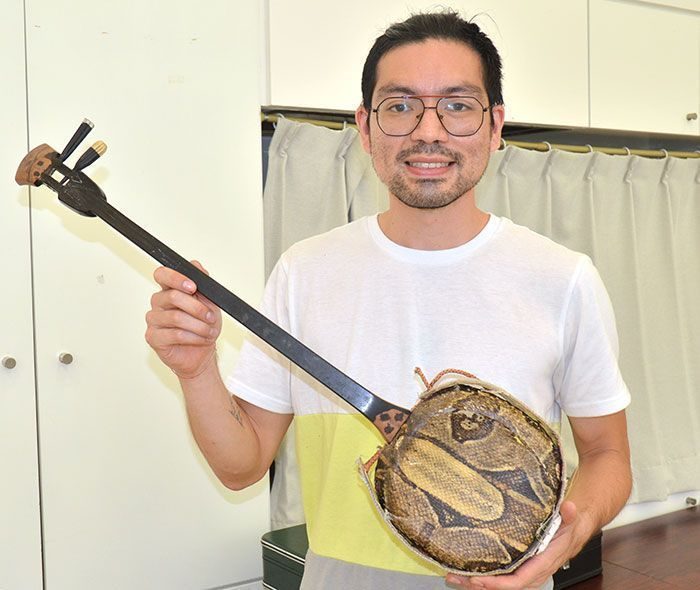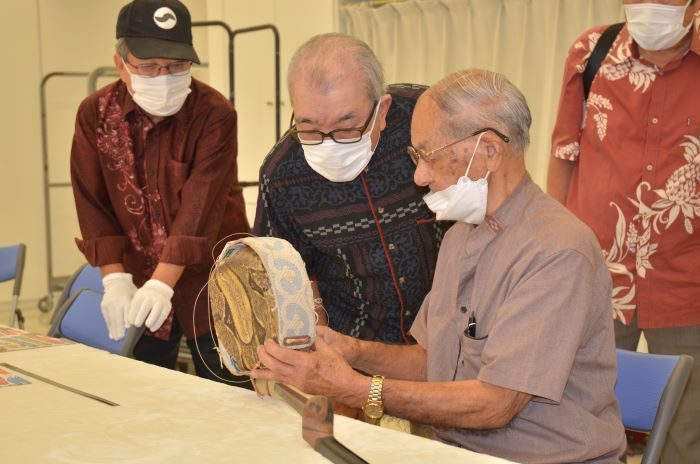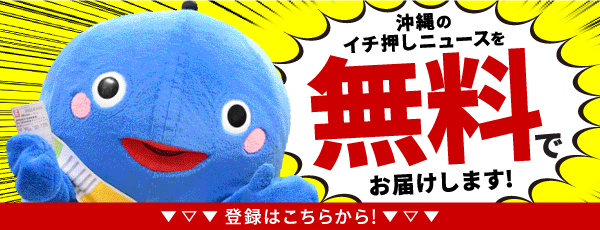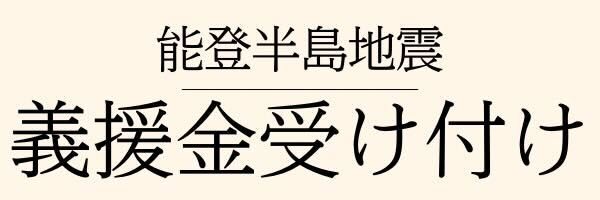
Farro Yamaguchi Cesar, 34, a third-generation Okinawan of descent in Peru, has come to Okinawa on a prefectural scholarship to learn sanshin making. There are many broken sanshin in Peru, but there is no one who can fix them. I want to be able to fix sanshin myself, so that I can help keep the sanshin culture alive," he says with determination. Of all the broken sanshin, the one he wants to fix the most is the one that belonged to his grandfather, Fusao Yamaguchi, a first-generation in Peru who passed away four years ago at the age of 95.
Worldwide Uchinanchu News/Noticias de Uchinanchu en el mundo
Fusao was born in Shuri, Naha City. After the war, he emigrated to Peru, relying on his wife’s father, and when he returned home around 1970, he brought back a sanshin from Okinawa to Peru. As a child, Cesar loved to listen to Fusao’s sanshin. He often listened to “Hiyamikachi bushi” and “Asatoya yunta. “My grandfather’s songs were full of feeling.”
Grandfather’s sanshin had already been repeatedly repaired. The skin had been replaced with the skin of a Peruvian snakeskin, and the tiga (body wrapping) had been replaced with English cardboard. Half a century had passed since the sanshin was brought to Peru from Okinawa. The sanshin, which he shared with his grandfather, has also become a “Worldwide Uchinanchu,” a mixture of Okinawan and Peruvian.
On the 26th, Cesar brought his grandfather’s sanshin to a sanshin survey meeting conducted by the Ryukyu Sanshin Instrument Preservation and Training Association and asked for an appraisal. The connoisseurs, including Chairman Harumasa Mekaru, who examined every detail of the sanshin, including weight and length, were impressed by the depth of his attachment to the sanshin, which were mixed with Peruvian colors.
Cesar is currently studying at Sho Kobo, a sanshin store in Naha City. The broken pole has been reinforced with glue and other materials, and is close to being restored to its original state.
Cesar says, “When I return to Peru, I want to repair many broken sanshin. That way, I can continue to play the sanshin. Peruvian Nikkei love the sanshin,” he laughed.
(Masatoshi Inafuku)

Arreglar el Sanshin de mi abuelo, De Okinawa a Perú… En el sufrimiento y el éxito: La determinación de un okinawense de tercera generación
Farro Yamaguchi César, de 34 años, tercera generación de okinawenses descendientes de Perú, ha venido a Okinawa con una beca de la prefectura para aprender a hacer sanshin. Hay muchos sanshin rotos en Perú, pero no hay nadie que pueda arreglarlos. Quiero ser capaz de arreglar los sanshin yo mismo, para poder ayudar a mantener viva la cultura sanshin", dice con determinación. De todos los sanshin rotos, el que más quiere arreglar es el que perteneció a su abuelo, Fusao Yamaguchi, de primera generación en Perú, que falleció hace cuatro años a la edad de 95.
Fusao nació en Shuri, ciudad de Naha. Después de la guerra, emigró a Perú, apoyándose en el padre de su esposa, y cuando regresó a casa, alrededor de 1970, trajo un sanshin de Okinawa a Perú. De niño, a César le encantaba escuchar los sanshin de Fusao. A menudo escuchaba "Hiyamikachi bushi" y "Asatoya yunta". "Las canciones de mi abuelo estaban llenas de sentimiento".
El sanshin del abuelo ya había sido reparado repetidamente. La piel había sido sustituida por la de una serpiente peruana, y la tiga (envoltura del cuerpo) había sido reemplazada por cartón inglés. Había pasado medio siglo desde que el sanshin fue traído a Perú desde Okinawa. El sanshin, que compartía con su abuelo, también se ha convertido en un "Uchinanchu mundial", una mezcla de okinawense y peruano.
El día 26, César llevó el sanshin de su abuelo a una reunión de reconocimiento de sanshin realizada por la Asociación de Preservación y Formación de Instrumentos Sanshin de Ryukyu y pidió una valoración. Los conocedores, entre ellos el presidente Harumasa Mekaru, que examinaron cada detalle del sanshin, incluyendo el peso y la longitud, quedaron impresionados por la profundidad de su apego al sanshin, que estaba mezclado con colores peruanos.
César estudia actualmente en Sho Kobo, una tienda de sanshin de la ciudad de Naha. El poste roto ha sido reforzado con pegamento y otros materiales, y está a punto de ser restaurado a su estado original.
César dice: "Cuando vuelva a Perú, quiero reparar muchos sanshin rotos. Así podré seguir tocando el sanshin. A los nikkeis peruanos les encanta el sanshin", dijo riendo.
(Masatoshi Inafuku)
Full story of original Article(Japanese only)
【Espanol】La historia de Uchinanchu en el mundo: 420,000 descendientes con orgullo y amor
Ryukyushimpo Multilingual NEWS
▼大会取材班のインスタはこちら/Instgram on Ryukyushimpo▼



